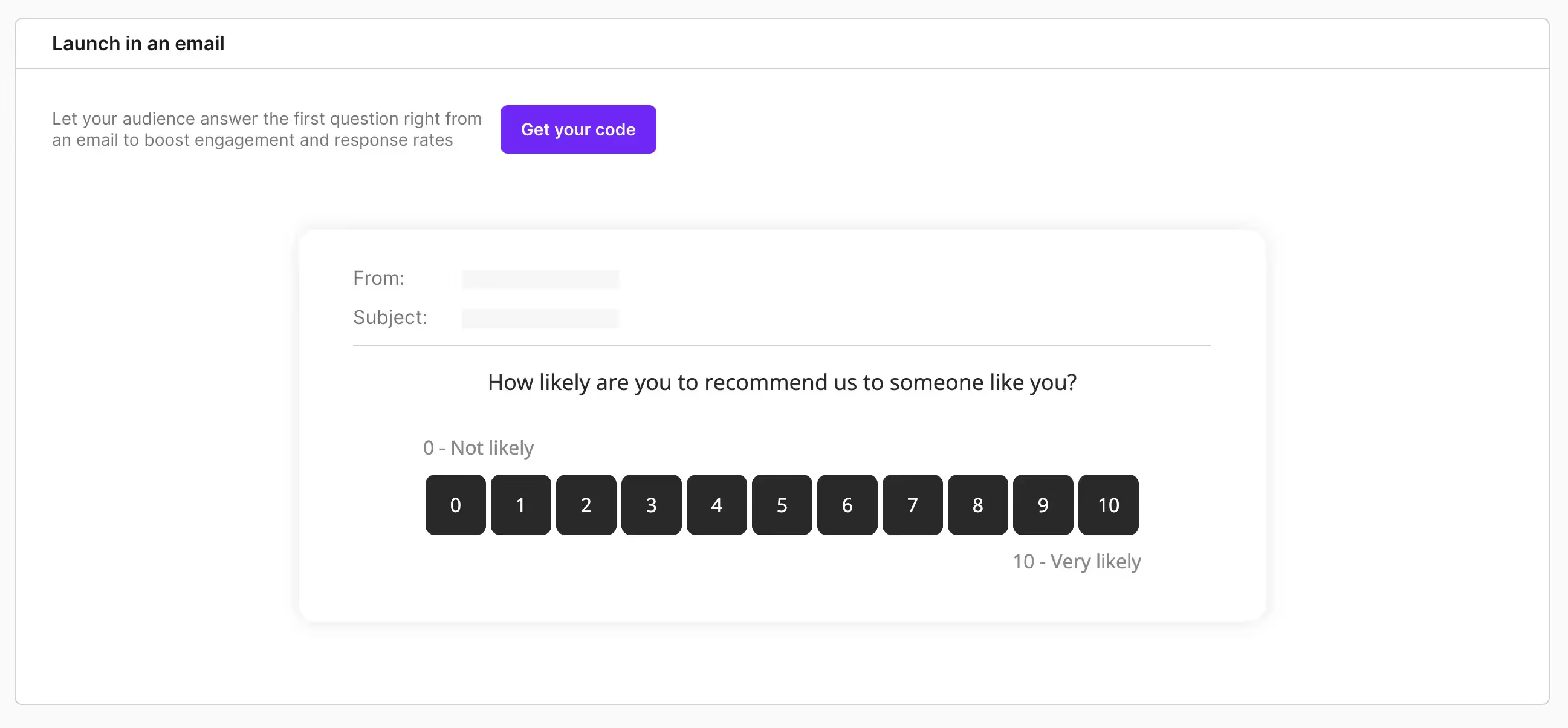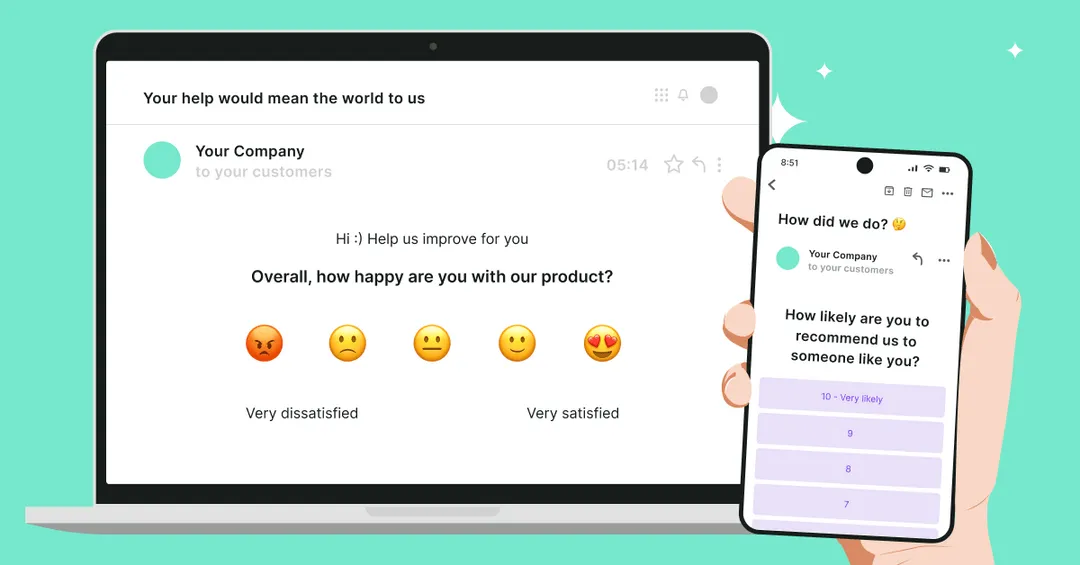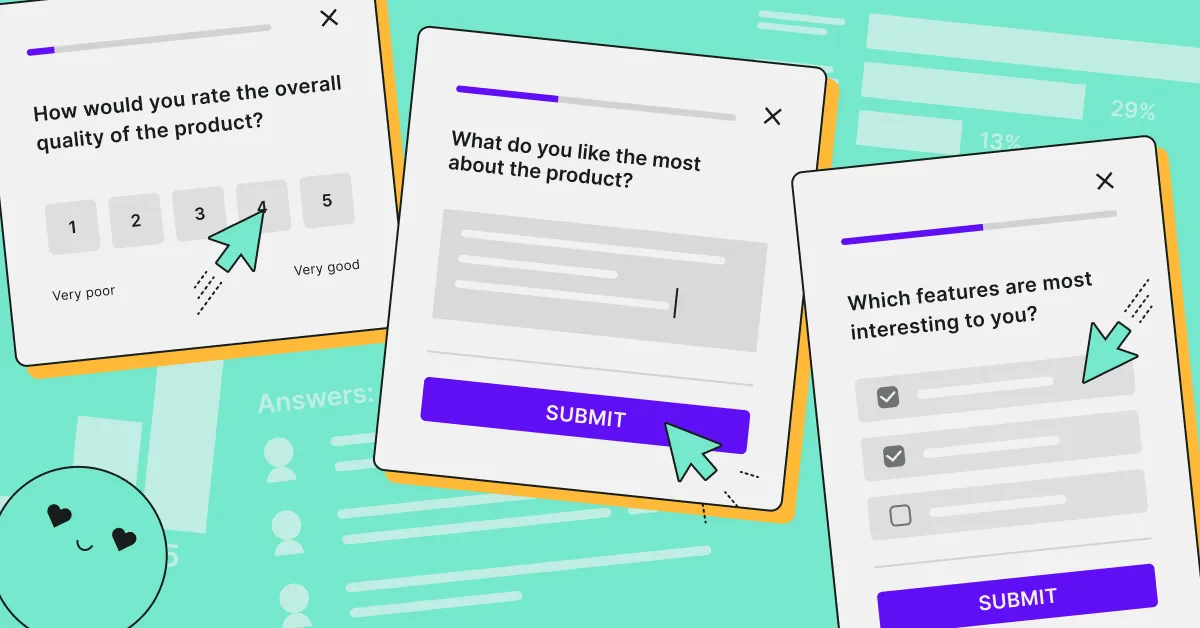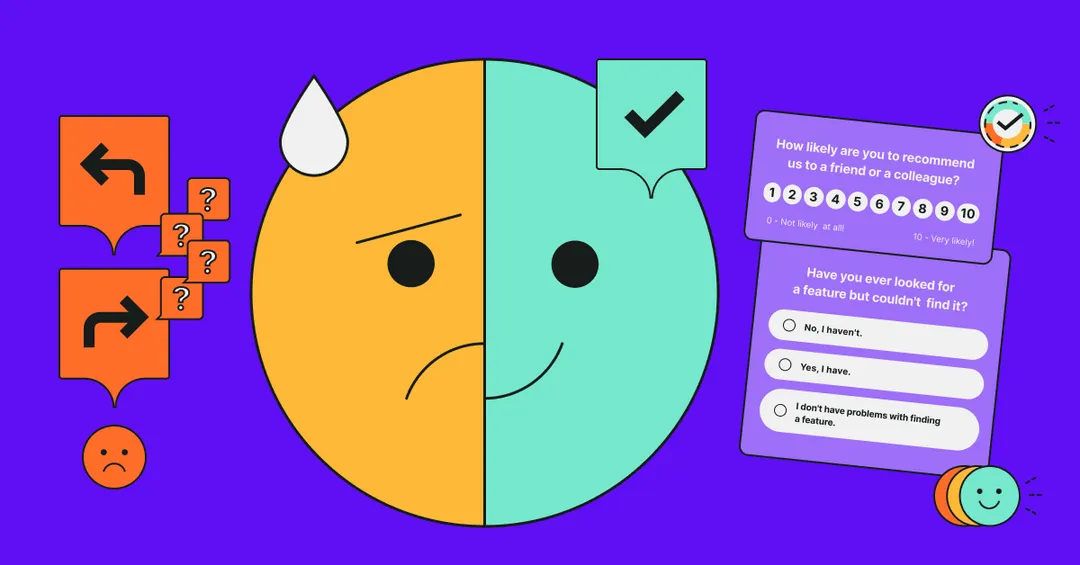Product roadmaps are essential strategic documents that all too often fail to deliver value. They fail to paint a clear picture of the product strategy, fall short of keeping the momentum, or worse still, lead to the development of clunky products with high user churn.
To hit the mark, product roadmaps need to be living documents - revisited and updated regularly against the company's resources, the growing understanding of user needs, and user expectations that change.
In this blog post, we will show how surveys can be used to build effective product roadmaps - with the right priorities and a clear picture of the company strategy.

What is a Product Roadmap?
A product roadmap is a high-level, structured plan on how to develop your product.
It consists of:
- the list of new features to implement
- the list of upcoming upgrades
- the timeline of what is built in a week, month, quarter, or a year.
The primary purpose of a product roadmap is giving the development team and stakeholders a clear vision of the priorities are; of the upcoming implementations and long-term changes and how they tie to a company's long-term objectives.
As we've said, the documents are not static. As you develop your product, you uncover new user insights, influencing your vision. Moreover, user expectations are changing. So is the competitive landscape. Something nice to have today can quickly become a must-have tomorrow. Failing to keep up with the changes may lead to losing product-market fit and high user churn.
As a product manager, you need to keep revisiting your roadmap and the way features implementations are prioritized.
What can help you prioritize new features to implement is the feedback from customers and website visitors. Let's take a look at how to build a better product roadmap.
How Customer Feedback Help Build Better Product Roadmaps
Product teams often make product decisions based on only a few answers. It's a mistake we're all prone to making. It's not uncommon to push a particular decision considering product development only because a few customers made a feature request.
It sounds like a reasonable choice, right? Where's the mistake? The problem is not taking into account all existing and potential customers.
The fact that customers communicate a need for a feature does not mean the feature is the most vital one for the future of your business.
A lack of a difference may make 50 customers churn and look for a more suitable alternative without saying a word.
In such a scenario, would you still say that basing your product decisions on any piece of feedback is a good move? In order to make good product development decisions, you should take into account user feedback from more sources than only angry customers.
To evaluate your app, conduct proper product research, and run a survey across multiple channels. This product testing survey template will help you do it in an efficient manner:
How to Prioritize Decisions Creating a Product Roadmap
As already mentioned, setting priorities is key. But how to do it?
Look at the potential outcome of decisions regarding the product roadmap. Should you prioritize a new feature that will help you potentially acquire 50 new users, or one that will help you upgrade 30 current customers from basic to more expensive subscriptions?
The key is their lifetime value. Also, bear in mind that the fact that people say they would buy a subscription if you add a feature or two doesn't necessarily mean they will do it.
Existing users are a different story, however. For them, a lack of a particular feature can be a real pain, and they will be happy to upgrade as soon as you add it.
With revenue in mind, don't forget about your vision. Focusing on urgent tasks only can blur your vision of a product, which can be dangerous in the long run.
A simple way to avoid it is to plan the time, resources, and the spend. For example: Devoting 30% of the time to building your long-term vision and the rest to introducing new features that will help you maintain and acquire new customers now.
How to Get Feedback for Your Product Roadmap
Collecting feedback from customers is easy – you can talk to them using chat, email, send surveys or even call them – it's up to you what you choose. If you choose the right product feedback tool that is easy to implement, you can start collecting product feedback in minutes.
As far as surveys are concerned, here are the digital touchpoints that are most effective for collecting significant numbers of insights.
Website Surveys
When it comes to collecting feedback from potential customers, website surveys are the most effective way of getting feedback from website visitors.
Here's an example of a simple question that can be displayed on the visited webpage:
'Are we missing any features?'
And, if 'yes', a follow-up question:
'What features are we missing?'
To make the survey even more actionable, you can collect email addresses to be able to contact people once you implement the requested features.
TIP: Collect feedback on pricing or features pages from registered users only. Otherwise, you'll end up with many answers suggesting adding features you already offer.
To test your pricing, use the pricing feedback survey template:
FURTHER READING:
Mobile App Surveys
Just like website targeted surveys, mobile app surveys are a great way of chatting up your app users while they're in the middle of interacting with your product.
If, for instance, you own a food delivery app, you might catch a user right after he or she dealt with an obstacle or asked about a handy feature that would skyrocket your product.
Like with website surveys, when sending mobile surveys, follow up on missing features requests. Nevertheless, remember that your mobile device respondents won't have the convenience of a keyboard to write long answers or answer many open-ended questions.
FURTHER READING:
Feel free to check out this product-market fit survey template by Survicate you can easily embed in your app:
💡 YOU MAY ALSO BE INTERESTED IN: Innovation ideas research survey template
Email Surveys
Another option worth considering is using email surveys to get feedback from all existing customers. It's a great way to reach the users who haven't interacted with your product since you've launched your website and mobile app questionnaires.
As in previous cases, ask your email respondents what features they would like to see built next to or their main challenge in using your product.
Answers will show you what to focus on. Plus, if you integrate your surveys with your marketing automation tools like Intercom, HubSpot or ActiveCampaign, you can see answers on profiles or customers so you can reach out to them with more questions about requested features or get back to them when you add features they need.

FURTHER READING:
TIP: You don't need separate customer feedback tools for running website, mobile app, and email surveys – with a good survey tool like Survicate you can run surveys via multiple channels at the same time.
You can also run a link survey, which lets you paste your survey to a whole plethora of other marketing and communication tools.
Product Roadmap Survey Question Examples
Let's take a quick recap.
We've just reviewed how you can reach your audience to collect responses quickly. What other questions, apart from those mentioned above general Yes/No inquiry, are worth asking?
If your customer success team provided you with a list of feature requests from customers (not leads!), then you'll likely want to verify which of them are indeed on popular demand and which are isolated cases.
You'll also want to make sure that you prioritize features in the roadmap not only because they're most popular but also because they're requested by avid users who are likely to upgrade.
Remember – lifetime value of customers over gambling for potential leads with new product features.
Here are some survey question examples:
- 'How often do you use our product?' followed by:
- 'Which features do you use the most?'
- 'Which features or product changes would you like to see the most?'
TIP: It is best to ask these questions in an open-ended format so that you're not suggesting any answers by displaying a list. Otherwise, your respondents might upvote features that are more of a nice-to-have, and not critically-needed, list.
How Survicate helps your roadmap
Survicate streamlines feedback collection and management. On top of a robust survey templates library for product teams to use, the tool integrates with market-leading product management platforms like Amplitude, Mixpanel, and Productboard.
The integrations allow SaaS companies to collect in-product surveys and quickly act on the user feedback right in the product tools. They can easily feed their product roadmaps with user feedback and feature requests.
By enhancing product roadmaps with quotes from users and survey quantitative data, product managers gain evidence for the stakeholders that given implementations need to be done. The user feedback also helps product teams to understand user personas and come up with better user stories and better solutions, as a result.
.avif)
Conclusion
Building a product roadmap is worth the effort only if you share it. If defined on the basis of thorough customer feedback, it can do real wonders for your entire organization.
Just think of it:
The product team has no doubts about what to focus on. And, sales reps use it as an argument to explain to potential customers why building a specific custom feature is not possible soon.
What is more, if you know a specific feature, such as integration with an external partner, is on its way and anticipated by many customers, you'll already be able to collect emails for early access!
Now, let's look at those leads. Being presented with a product roadmap, potential customers will be able to make a more informed choice while choosing a provider. Please think of the positive influence it will have on lowering churn rates.
Last but not least, your support team will also appreciate it – when people are familiar with the roadmap before signing up, they will have fewer requests and questions about new features.
Convinced? Give Survicate a go and see how effortless collecting user feedback can be.

.avif)






.webp)




.webp)
.webp)


